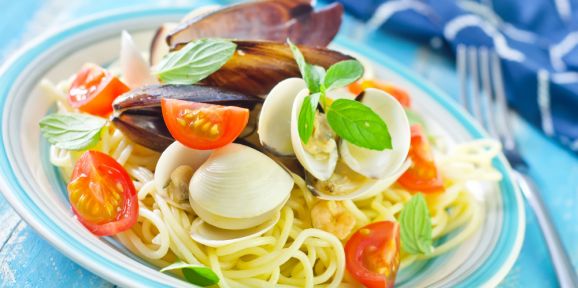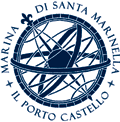Santa Marinella, known as the “Pearl of the Tyrrhenian” because of its south-facing coastline and its mild climate sheltered by the Monti della Tolfa, is an enchanting destination characterised by alternating rocky and sandy inlets and spectacular sunsets over the sea. Busy all year round, the town is the perfect destination for those looking to enjoy even a short weekend break, any time of the year, as demonstrated by the delightful Art Nouveau-style summer homes that adorn the settlement. In addition to wellbeing facilities, there are also numerous cultural attractions in the area around the marina, recalling the splendours of the Etruscan civilisation and the Roman Empire. Last but not least, when strolling along the seafront it is not unusual to come across young surfers as they carry their boards down to the beach, ready to ride the majestic waves that develop here thanks to the particular position of the coast and the shape of its sea beds.
The Pearl of the Tyrrhenian
Surfing and diving
Santa Marinella’s coastline is around 22 km long, running from Baia di Ponente, around 8 km from Civitavecchia, to Santa Severa castle, which adds a spectacular touch to the beautiful contours of its pale and dark sandy beaches. On one side are the mountains, on the other is one of the most beautiful stretches of sea in the Rome area, with its sheer cliffs and Mediterranean vegetation that blend in to an extremely varied coastline. The northern part of this coast is dominated by wild-looking beaches, alternating with small sandy areas home to bathing establishments. Heading south, we come to a stretch of coast characterised by a series of terraced stilt houses that continue to Capo Linaro, where almost the entire length of the coast features a rich expanse of sandy beaches and modern bathing establishments, making it a perfect location for couples and families looking for relaxation, entertainment and a quiet daily routine. Santa Marinella is a particularly popular destination among surfing enthusiasts. The shape of the bays in the area, which cause the winds and sea currents to follow a particular path, allows big waves to develop in certain areas such as Banzai beach, attracting surfers from all over the Mediterranean. Meanwhile, the seabeds in Santa Marinella offer diving enthusiasts and photographers underwater landscapes of a rare beauty, which can be explored with the assistance of Abyss Divers, the diving centre based in Marina. The centre organises diving courses for all ability levels, supplying participants with all the equipment they need to admire these wonderful sites characterised by wrecks, shallows and walls populated by Mediterranean flora and fauna. There are two particularly interesting diving points just a short distance from the marina: the Pierucci Wall, which is almost 1 km long and dotted with small corals, yellow sea fans, sea daisies and numerous lobster and conger eel lairs, and the Wreck of the Liburna, a cable-laying ship sunk around 30 years ago to help prevent trawling. The wreck is in sailing trim with the bow to the west at a depth of around 38 m.
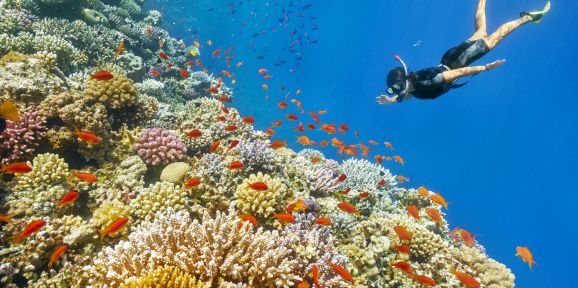
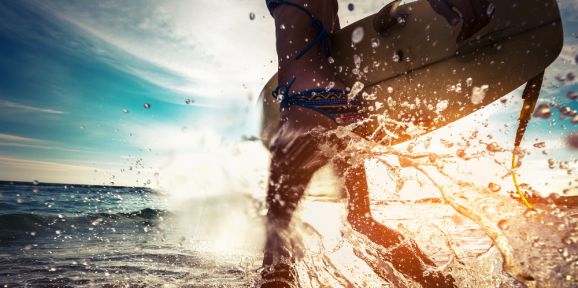
Rome, the eternal city
The indelible traces of history, art and culture that have shaped the modern West are revealed to guests at Marina di Santa Marinella after just a 35-minute train journey. This is all it takes to reach the world’s biggest open-air museum: Rome. The number of tourist attractions in this city is huge and difficult to fathom, so much so that even Romans struggle to explore the eternal city to the full. Each visit has to be planned on the basis of your own requirements and interests, starting with its majestic monuments, its domes and its squares, losing yourself in an age-old history that shows itself everywhere you look, extending right out to the very edges. In order to offer guests at Marina di Santa Marinella a truly authentic experience, we start our discovery of Rome with some invaluable advice from a Roman friend that will open a window onto parts of the city that are off the beaten tourist track. Our visit starts in the Jewish Ghetto, at the heart of the city’s food and wine culture, where typical social customs are acted out on a daily basis: people sitting down to “gossip” and “watch” the bustling coming and going of visitors to the local bars around the Porticus Octaviae or perhaps near the Fontana delle Tartarughe, custodian of countless legends, ending the tour on the banks of the Tiber, at the Tiber Island, the smallest inhabited island in the world. Continuing this unusual itinerary through the historic centre, we now enjoy an aperitif at the Bar del Fico, just a short step away from Piazza Navona and its cafes animated by lively street performers. In the Christmas period, particularly during Epiphany, the square is filled with fairground rides and attractions for children, because the Roman tradition has it that children receive their gifts from a witch known as the Befana rather than from Father Christmas!
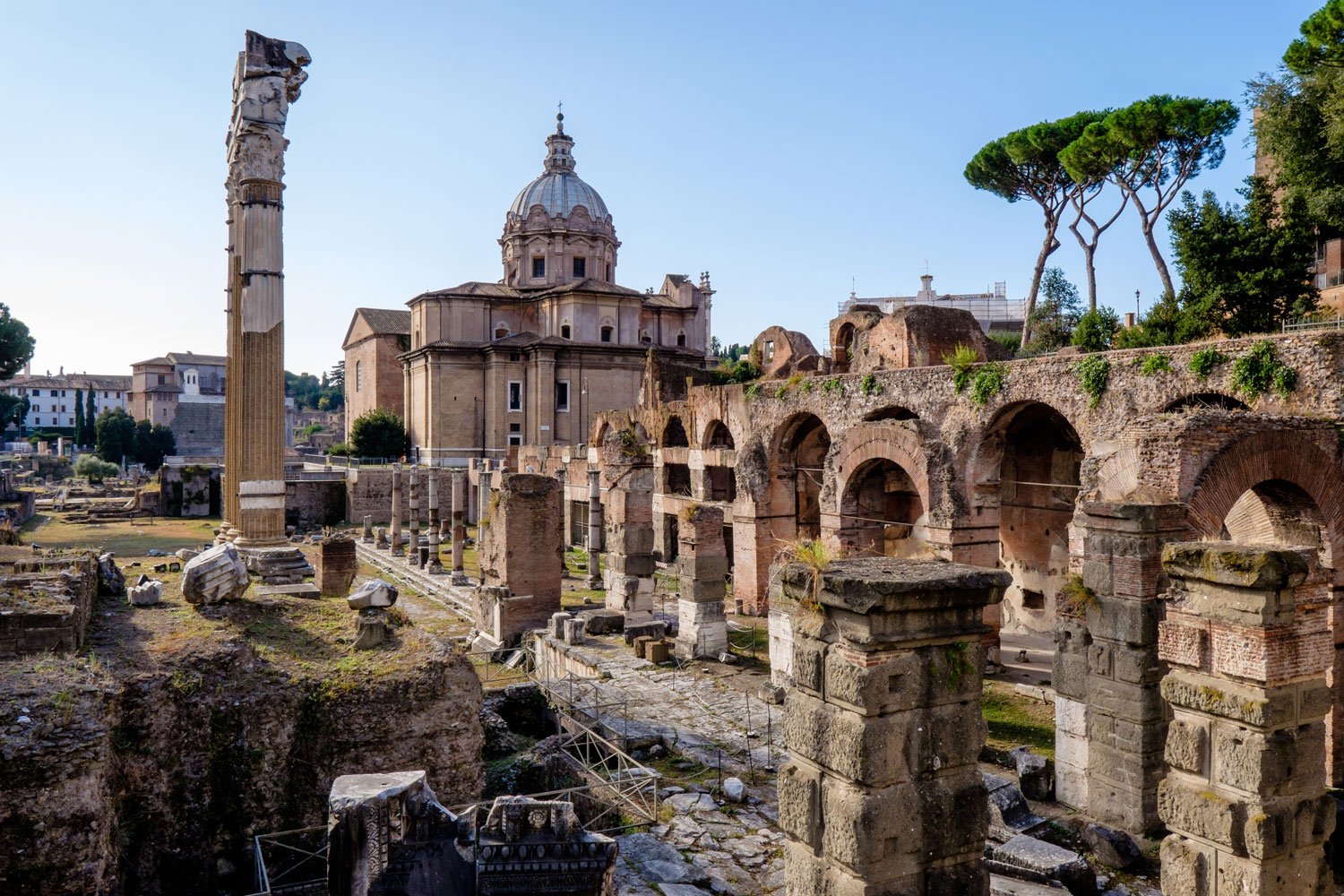
It is true that Europe’s most fascinating capitals only reveal their true face from above. When in Rome, it is essential to go for a stroll on the Gianicolo, one of the city’s famous seven hills. From here it is easy to get to the wonderful Botanical Gardens in the heart of Trastevere, the real hub of Roman life with the Ponte Sisto in the background. Those interested in discovering the aristocratic heart of the city and the traditional homes of the Capitoline nobility should visit Palazzo Ruspoli, with its splendid flight of steps by Caetani, formed by 120 marble steps and considered one of the four wonders of Rome. A little-known but real architectural masterpiece is Palazzo Spada, now home to the Council of State, which deceives visitors thanks to Borromini’s perspective gallery, an optical illusion typical of the Baroque period. It also houses one of the most beautiful globes in the world. Don’t miss out on Palazzo Farnese, home to the French Embassy, where the main hall (not open to visitors) is often illuminated at night, allowing passers-by to glimpse the wonderful frescoes in one of the city’s most beautiful parlours. Rome is a city that is generous to everyone. It is not only a cradle of history and culture, but also a catalyst for innovation and experimentation. This is apparent in the stunning modern and contemporary artworks on display in the MACRO museums. This recent museum establishment occupies two separate venues: MACRO Testaccio, situated in the old slaughterhouse in the heart of the Testaccio district, cradle of real Rome, which also houses an original example of a specialist landfill site from Roman times, and the MACRO site on Via Nizza, just outside the Aurelian Walls, near Porta Pia, symbol of Italian Unification. The Coppedè district is an oasis of unexpected and bizarre style, with a surprisingly inebriating blend of seventeen villas and twenty-six palazzos with Tuscan towers, Art Nouveau sculptures, Moorish arches, Gothic gargoyles, frescoed façades and gardens with palms, all by the Florentine architect Gino Coppedè. The heart of the district is undoubtedly Piazza Mincio with its wonderful Fontana delle Rana, made famous by the Beatles who jumped in fully clothed after performing at the Piper nightclub. For a relaxing break in the heart of the city, the best places to visit are the nearby Villa Torlonia, Villa Paganini and Villa Ada, beautiful green parks that provide a perfect place for a special picnic, a walk or jogging amidst natural surroundings.
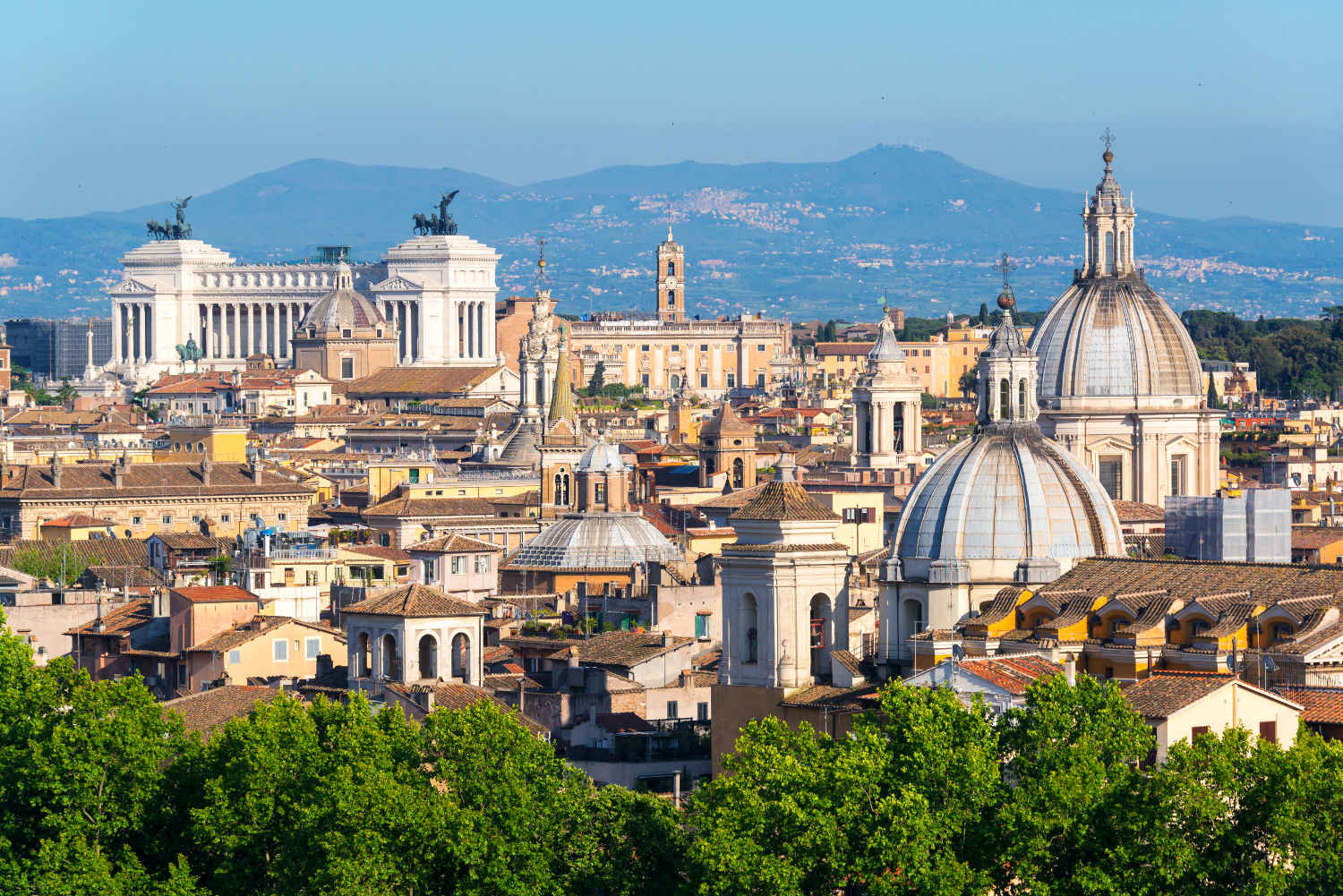

The Etruscan Coast
Santa Marinella, known as Punicum during the Roman era, boasts a natural port which was used since the times of Etruscan settlements.The tradition attributes to Basilian monks, around the year one thousand, the construction of the village and the church dedicated to Santa Marina on the area of the ancient Punicum around the inlet -also used by the Etruscans as a landing- where the marina of Santa Marinella is today. The Etruscan city Pyrgy developed all around the port for an extension of about 10 hectares. Besides this area, at the present time occupied by the fortified village, back then it included also the sanctuary area at the southern end. As a backdrop of the marina, between pines and palm trees, there is the majestic castle dating back to 14th century -long disputed among the most important noble families of Rome, such as the Colonna and the Borgia- and now owned by Odescalchi family- from which the name is given. Within walking distance from Santa Marinella, there is another historic building of great prestige: the castle of Santa Severa. It is located in one of the most important archeological areas on the Tyrrhenian coast north of Rome. Crossing the walls of his fortified village you enter the Sea Museum, which traces the route taken by Ulysses and the Greek merchants revealing the wonderful artefacts found during underwater surveys. From Santa Marinella, the town of Cerveteri is easily reachable in few minutes by car. Cerveteri is an UNESCO world heritage site, its Etruscan necropolis is one of the most important open-air museum sites in the Mediterranean. This journey into the Etruscan civilisation continues on to Tarquinia, the first page in the history of great Italian painting “for its exceptional painted tombs adorned with scenes of huntsmen, fishermen, jugglers”. Along the trail between the tombs of the Monterozzi necropolis, the frescoes well preserved on this site seem to observe the visitor in the twilight of a remote and fascinating era, where the Etruscan society was dominated by women.
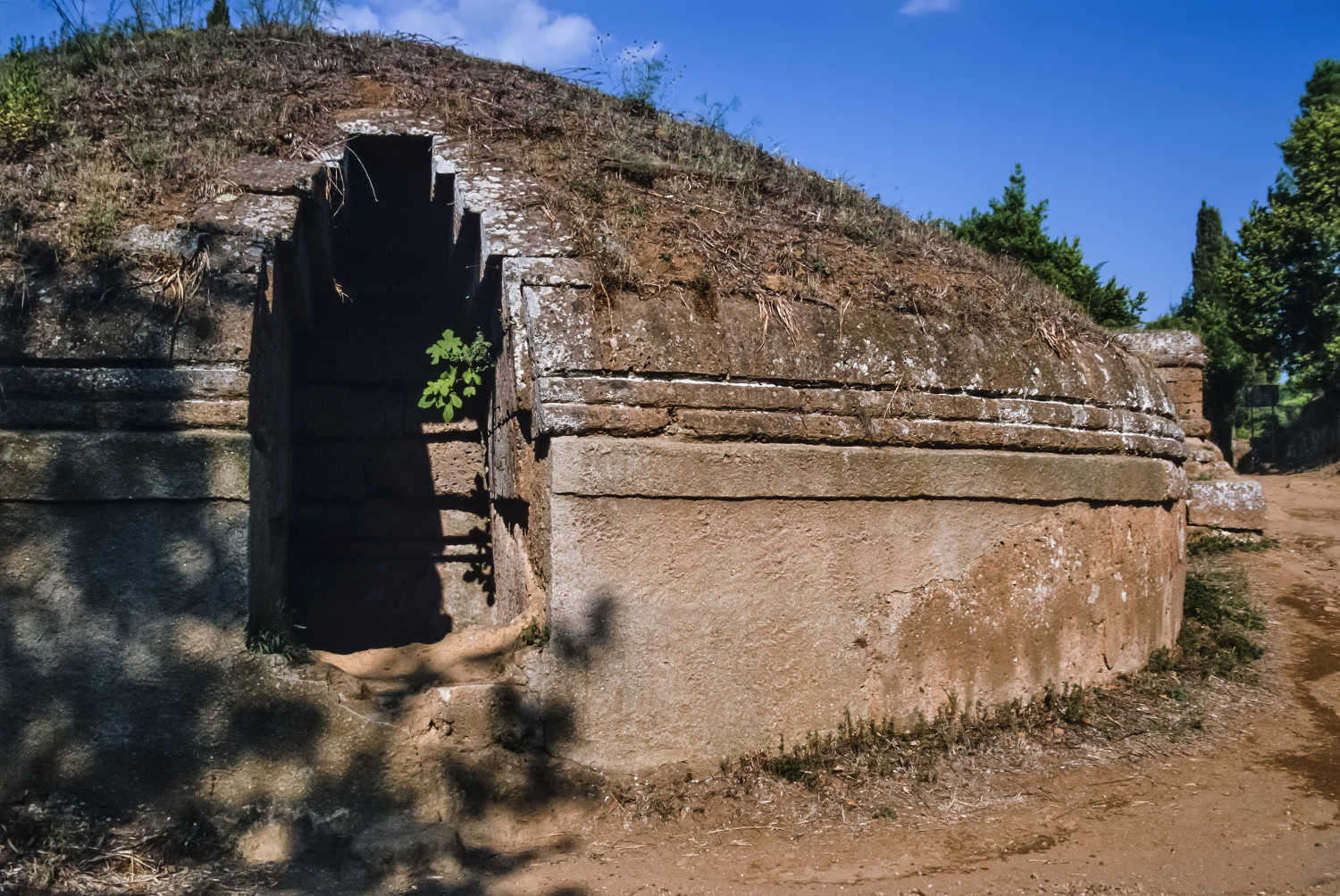
A feast not to be missed
If Italy is considered the home of the Mediterranean diet, Santa Marinella and its surroundings perfectly reflect this healthy and tasty style of eating.
Precisely from these lands starts the famous path called Strada del Vino e dei Prodotti Tipici delle Terre Etrusco Romane (wine and typical products route of Etruscan lands). This trails starts from Via Aurelia, few kilometres away from Rome, in a scenario that alternates cultivated fields, olive groves and pastures. But above all you can find a wide variety of farms especially in the picturesque medieval village of Torre in Pietra, Ceri, Cerveteri, Tolfa and on the Bracciano lake. The real route’s highlight is without any doubt the wine. In particular the two DOC certifications: Cerveteri and Tarquinia, as well as the new IGT Costa Etrusco Romana. In addition to the exceptional wines, the food farming heritage of these lands is very rich as it can counts on fertile fields, which produce vegetables of excellence, such as the IGP Ladispoli artichoke or the Trevigano tomato.Not to mention a deep rooted cheese-making tradition, exemplified by “caciofiore” of Columella, a cheese that is still produced today by following the description and the original recipe from the inventor Columella dated back to the first century A.D. A visit to Rome cannot be done without stopping to taste the famous Roman cuisine. Its most traditional dishes are artichokes “alla giudia” or tagliolini cacio e pepe (cacio cheese and pepper) or “alla gricia”. In Campo de Fiori area in Rome, you can taste an exquisite codfish fillet in Piazza dei Librari or for a quick lunch in summertime you can opt for a white pizza with Parma ham and figs from Forno di Piazza di Campo de Fiori, or for a lovely supplì (fried rice ball) in Via dei Banchi Vecchi. And if you are on the Roman coastline, and in Santa Marinella as well, it is impossible not to experience local dishes based on fish such as spaghetti with clams. Along the Roman costline, especially between Santa Marinella and Santa Severa, the culinary local tradition is based on seafood and it is genuine as it was once. Among the most popular local dishes you can find spaghetti with clams, excellent grilled fish and mussels with chicory. A fitting end to this journey through local fragrances and flavours is a glass of Sambuca, Italian liqueur among the best known in the world, born in the late nineteenth century in Civitavecchia, where it is still produced. The ideal place to sip it is undoubtedly the ghetto of Civitavecchia: here the local nightlife and fine restaurants take centre stage all year round.

